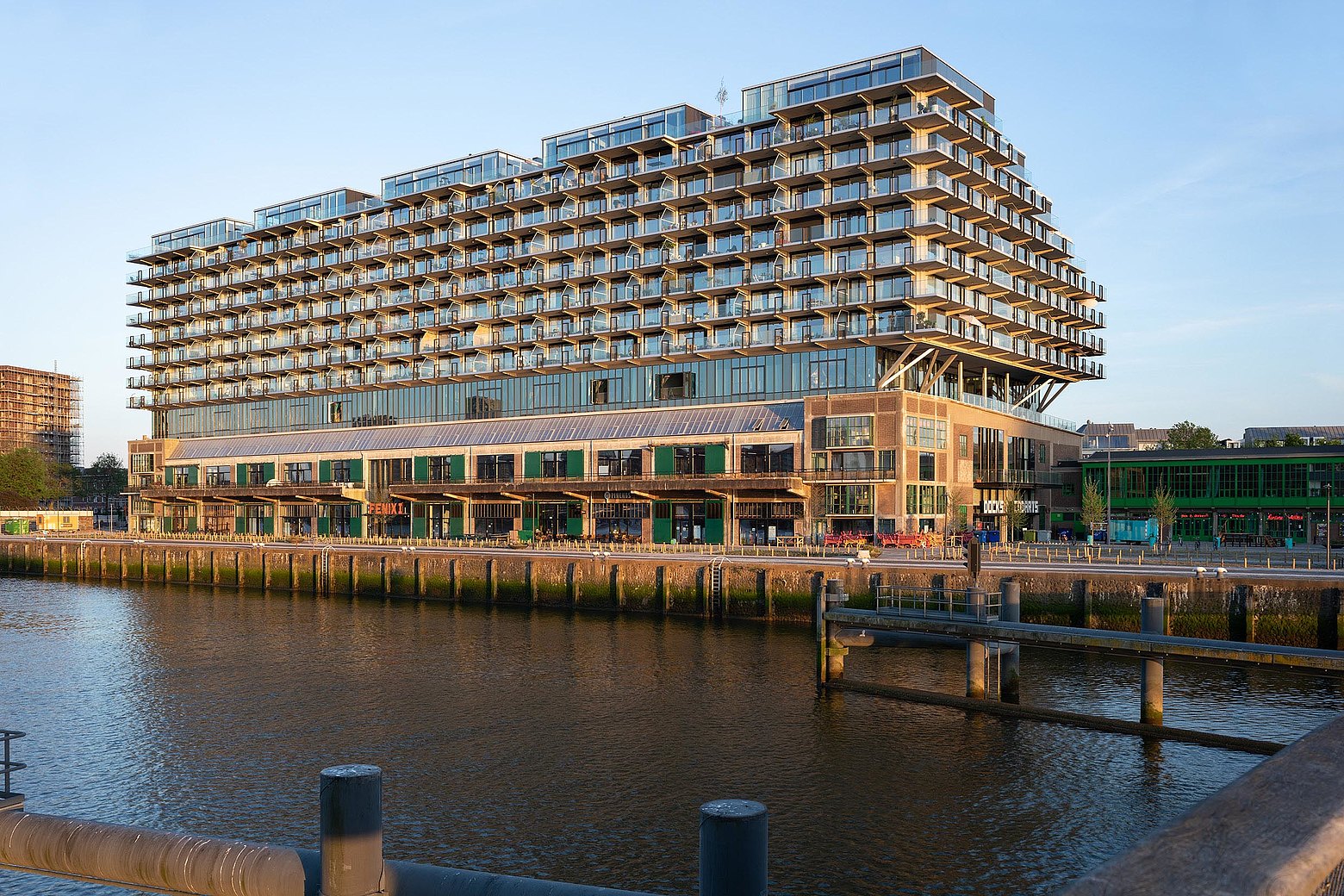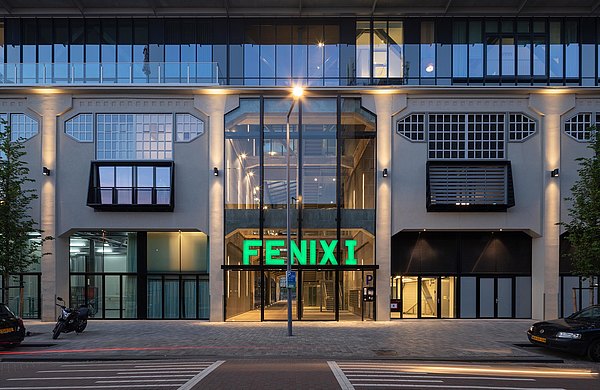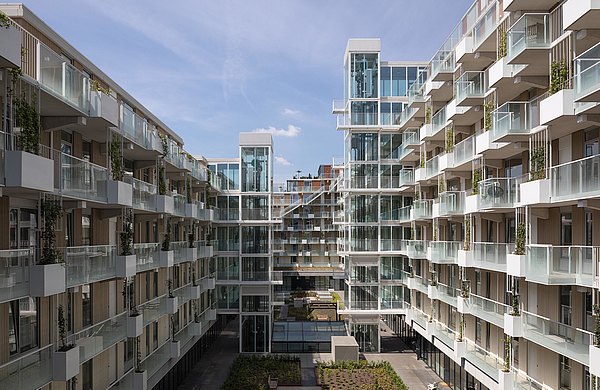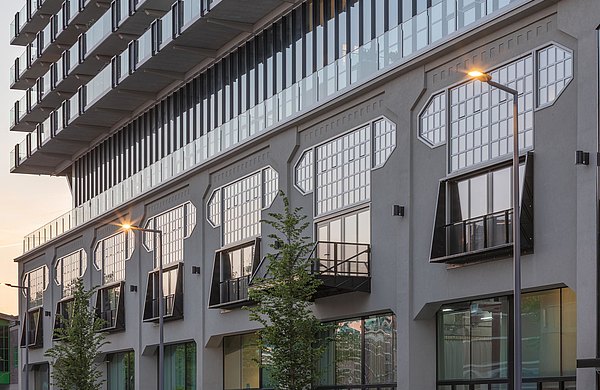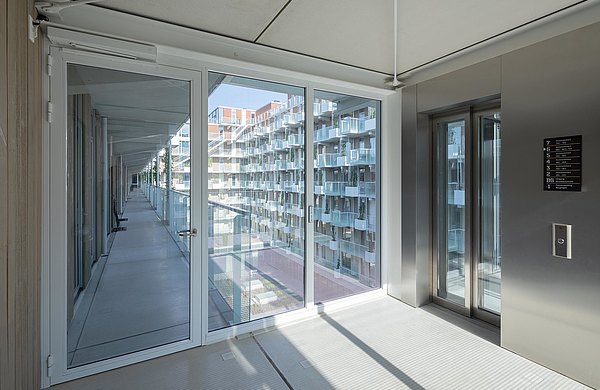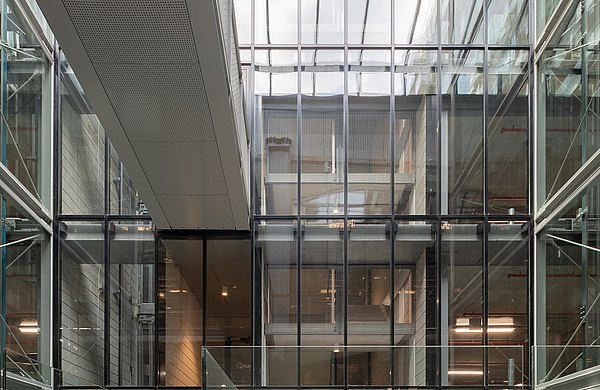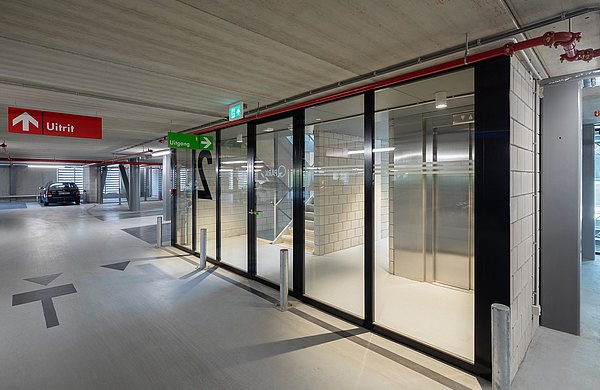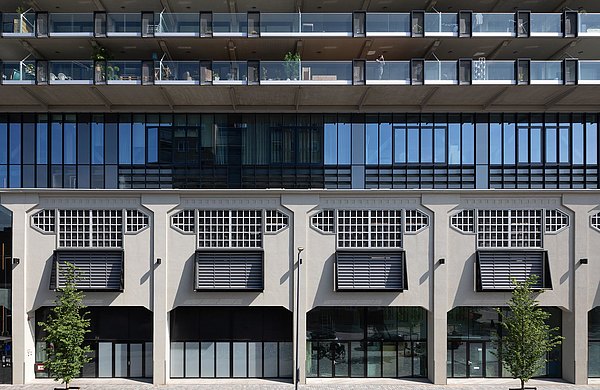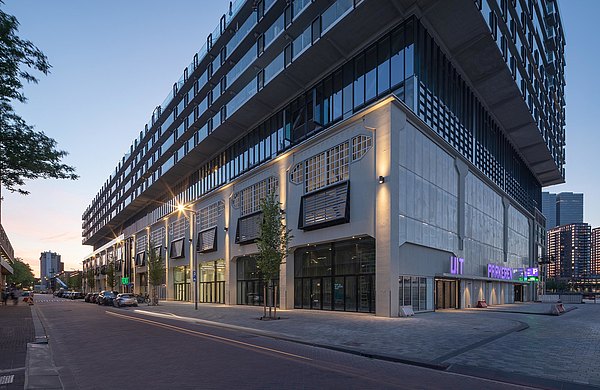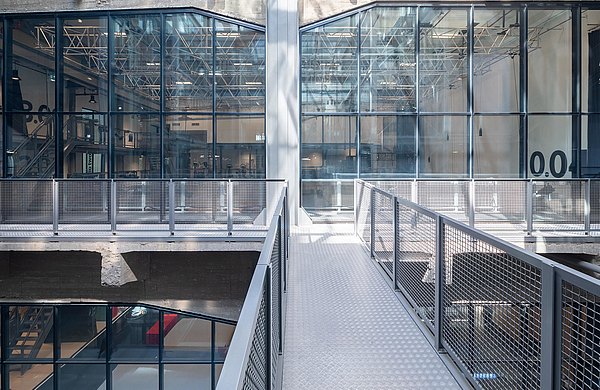Fenix I, NL
A modernised urban district in Rotterdam
Living with a view in the port of Rotterdam
Where in long-ago times emigrants set off for the new world and seamen lived their unsettled lives, a formerly neglected district has now been rejuvenated and risen like a phoenix from the ashes. The Katendrecht peninsula in Rotterdam has become a hip and lively modern district. Here, Rotterdam architects have built a huge residential complex with impressive facades over a historic shed.
Katendrecht is a peninsula in the Rotterdam port area between Rijnhaven and Maashaven. The old district, with almost 5000 residents, has had a rather eventful history. In the past, many emigrants left for the new world from Rijnhaven.
Upon completion of the Maashaven in 1905, the character of the area with its rural village life changed to a typical sailor's quarter with notorious nightlife. The inhabitants struggled with the consequences for decades. It was not until 2007 that structural improvements were made to the infrastructure, including the construction of the new Rijnhaven bridge in 2010.
A district comes alive
Since the 1920s, two old sheds had stood at the end of the bridge. According to the responsible people and resourceful young entrepreneurs, the plots of land offered the necessary space to help Katendrecht get back on its feet economically and culturally. The site was to become a place that offered space for smaller businesses and where people could produce, live, eat and consume. This idea worked so well that in recent years the peninsula has become one of the liveliest parts of the city, although some of the rougher corners still remain. Restaurants, cafés, ice-cream parlours and bars can now be found on every corner, making Katendrecht a dream destination for gourmets.
Historic buildings with a new use
The former sheds are now called Fenix I and II. "Fenix" means "phoenix" in English, and the peninsula has indeed reinvented itself like a "phoenix from the ashes". Fenix II is currently being converted into a culinary experience hall and a museum, while storeys have been added to Fenix I for a residential building by the Rotterdam-based architect firm mei architects and planners on behalf of the real estate company Heijmans. The cubature of the building decreases from nine storeys on the quay to five storeys facing the interior of the peninsula.
It is a remarkable fact that the old shed has been preserved as far as possible, while the new storeys have been arranged above it. The load-bearing framework made of many individual columns that penetrate through the old halls naturally influences the interior of the buildings that have been converted for gastronomy and individual businesses, even including a multi-storey car park with 227 parking spaces. The interior facade, which separates the staircase and lift system of the car park from the parking areas, was constructed using profiles from Forster Profile Systems of Arbon, Switzerland. The flush-fitting profiles of the forster presto series provide the necessary fire and smoke protection closure while at the same time ensuring maximum transparency due to the narrow profile width. Because large areas of glazing are used at the same time, excellent social control of all areas is possible due to the good visibility, thus offering all users a high sense of security. The forster presto profile system stands for reliability and simultaneously meets the high demands for technical functionality, despite the extreme continuous stress that is common in car parks. For this building project, the forster presto profiles were painted in black. However, forster presto is also available in stainless steel for elegant and particularly sophisticated solutions.
Swiss profile systems for Dutch residential buildings
The original sheds have become imposing buildings. On the site of the old warehouses you can now find the Fenix Food Factory, a market hall for fresh food and traditional culinary delicacies. In the fragmented exterior facade, thermally insulated windows and fixed glazing from Forster with very narrow views are used. The architects use the forster unico XS profile construction in the Fenix because the steel profiles are ideally suited for the renovation of old buildings, and sash weights of up to 150 kg are possible. The profile system enables a wide range of opening variants, the accommodation of fillers up to 60 millimetres, very favourable U-values (Uw > 0.84 W/(m²⋅K)) and excellent sound insulation values up to Rw = 47 dB.
A mullion and transom construction was used in the interior facades as a thermally insulated curtain wall: forster thermfix vario offers extremely slim views of only 45 millimetres in width and enables a variety of large-area applications in both fire protection and burglary protection. The profile system consists of two variants: forster thermfix vario for facades and glazing with safety application and sloped glazing and forster thermfix vario HI for highly insulated facades without security requirements.
Flats for young and large families
The flats in the upper storeys are offered in sizes of 40, 60, 80 and 100 square metres. On the top floor there are spacious penthouse flats with large roof terraces. In the lower halls themselves, located directly adjacent to the car park and in the outer facade, there are 14-metre high quay houses with an impressive living space almost 7 metres high. These flats can be entered at ground level, while the flats on the upper floors can be reached by lift and staircase. Forster profiles are also used in the access areas to the upper levels. At the lift entrances, the forster presto profile system – which is already in use in the car park area – reliably and safely separates the vertical access from the residential use.
A total of approx. 8,500 square metres of floor space is available in the Fenix for commercial, cultural and culinary uses, while the more than 200 differently designed loft flats offer approx. 23,000 square metres of living space. The total construction costs are estimated at 40 million euros.
Conclusion
With the forster presto profiles, the client and architects have chosen low-maintenance and sophisticated solutions that fulfil their purpose both in the historical and new building parts and have an impressive function and design.
Rotterdam, Netherlands
fire and smoke protection closure: doors and glazing in the staircase, parking garage and access areas of the upper levels (forster presto)
thermally insulated windows and fixed glazing (forster unico XS)
Interior facades: thermally insulated curtain wall - mullion and transom construction (forster thermfix vario)
Architect: Mei architects and planers, Rotterdam
Building owner: Heijmans / Proper Stok
Photography: Bart van Hoek Architectuurfotografie

